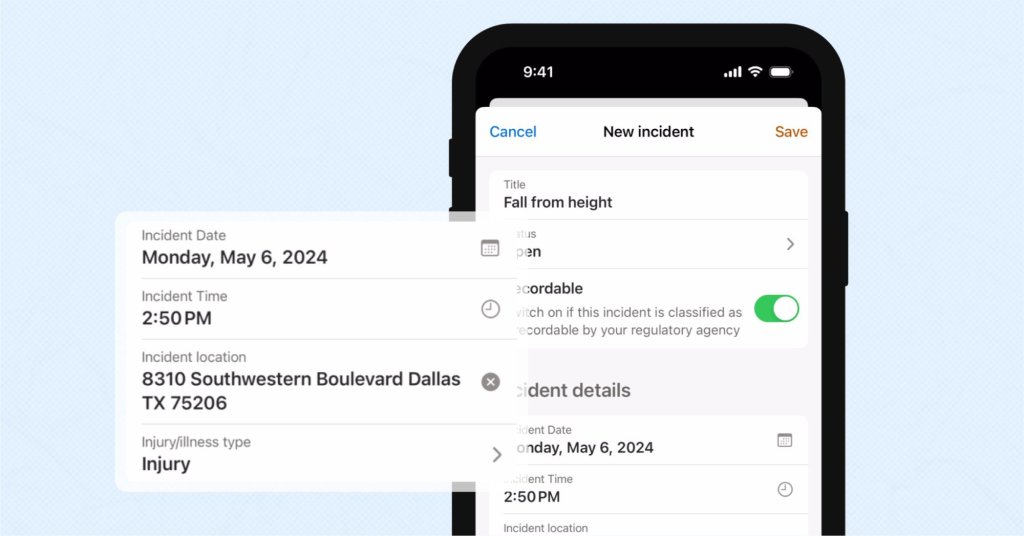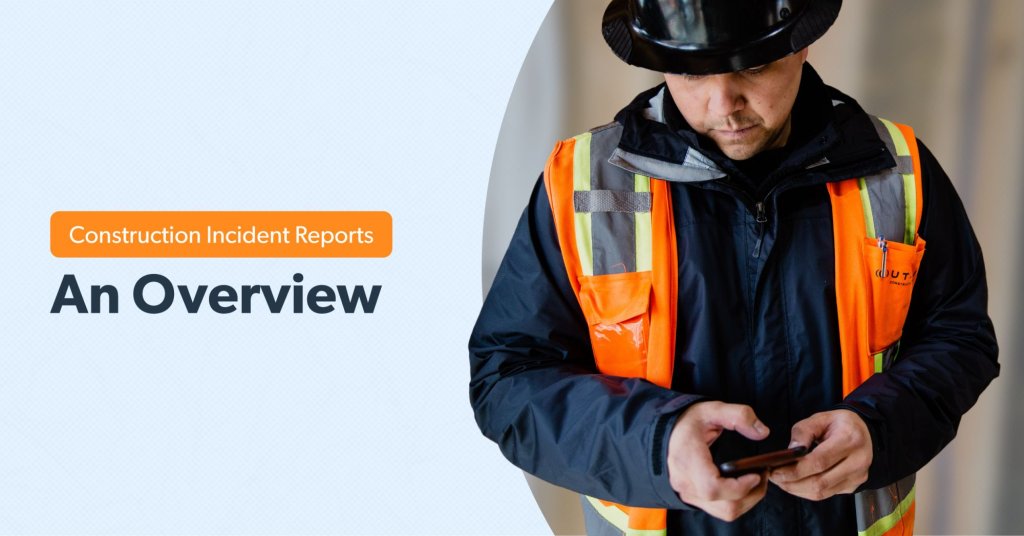Even with the most rigorous safety plan in place, accidents will happen on the jobsite. When workers get injured, it’s important to document the details and use that information to help prevent future incidents.
Learn about construction incident reports—including OSHA submission requirements—in this comprehensive guide.
What is incident reporting in construction?
A construction incident report is a type of documentation used to record injuries, illnesses, and near-misses that occur on a construction site. It captures all the relevant details, including the date and time of the incident, names of those involved, a description of the cause and contributing factors, and accounts from any witnesses.
Most construction companies in the U.S. are required to record and submit incident reports to the Occupational Health and Safety Association (OSHA) on a yearly basis.
Why are construction incident reports important?
Construction incident reports are important because they help businesses identify safety concerns and make impactful changes. Without documentation, it’s easy to forget what happened or overlook ongoing issues. A construction company should treat each incident as a learning experience, taking immediate corrective action to prevent similar outcomes in the future.
When incidents are reported to OSHA, the organization can use that data on a larger scale to better understand the hazards of construction and develop more effective worker protections.
OSHA incident reporting & recordkeeping requirements
There are three main OSHA forms associated with incident recordkeeping. These are:
Form 301 (Injury and Illness Incident Report) - An individual incident report that captures the details of a work-related injury or illness requiring some form of treatment, referred to as a recordable incident (May be substituted with a company-specific form that captures all the required information)
Form 300 (Log of Work-Related Injuries and Illnesses) - A log of all the serious incidents that occurred throughout a calendar year
Form 300A (Summary of Work-Related Injuries and Illnesses) - A consolidated summary of the information in Form 300
OSHA requires construction companies with more than 10 employees to keep and maintain these records for 5 years. They may be asked to provide copies of all these documents at any time, and they must publicly post a signed copy of the previous year’s Form 300A from February through April.
Additionally, construction companies with 100 employees or more are required to electronically submit injury and illness data once per year through OSHA’s Injury Tracking Application (ITA).
Finally, reportable incidents are incidents that result in catastrophic injury or death. These must be reported to OSHA within a short time frame. Worker fatalities must be reported to OSHA within 8 hours, and incidents resulting in amputation, loss of an eye, or hospitalization of the affected worker must be reported within 24 hours.
Learn more about OSHA’s electronic submission requirements >
Types of construction site incidents
There are several types of incidents on construction sites.
Serious events
Serious incidents are reportable incidents, as described above. They are incidents that result in a worker’s death, catastrophic injury, or serious illness. Examples include:
Loss of a limb
Loss of an eye
Injuries that require surgery or hospitalization
Serious events are often caused by OSHA’s fatal four hazards: Falls, electrocutions, caught-in incidents, and struck-by incidents.
Minor medical events
Injuries and illnesses that require professional medical treatment but that do not result in hospitalization or lost time for the worker are known as minor medical events.
Minor medical events may include a minor laceration or flu-like symptoms that necessitate a trip to the emergency room but do not require any long-term treatment, however, they still qualify as recordable incidents.
First aid only events
Some incidents may only cause minor injuries or illnesses that can be treated with over-the-counter medications or basic first aid.
OSHA may not require these incidents to be recorded, however many businesses choose to do so in order to use that data to improve safety initiatives.
Near misses
Near misses are not incidents—they’re close calls. When a worker almost gets struck or almost falls due to a safety hazard, the event is considered a near miss.
Just like with first aid only events, a construction company may still wish to complete an incident report on a near miss because of the value.
How Raken helps with incident capture

Raken’s easy-to-use construction incident reporting software helps you capture safety incidents in detail. Quickly record critical details on web and mobile and easily add attachments like photos and witness statements.
Our app is:
Secure - Store all your data securely on the cloud, where it’s easy to find from the field or office
Streamlined - Save time with digital documentation and automated workflows
User-friendly - No more pen and paper reports or complicated spreadsheets
We’re an all-in-one solution for field management. In addition to incident recording, you’ll get access to our digital toolbox of daily reporting, time and production tracking, and safety and quality management solutions.
Try Raken today and collect the data you need now, so you’re ready for 2025 OSHA submissions.
